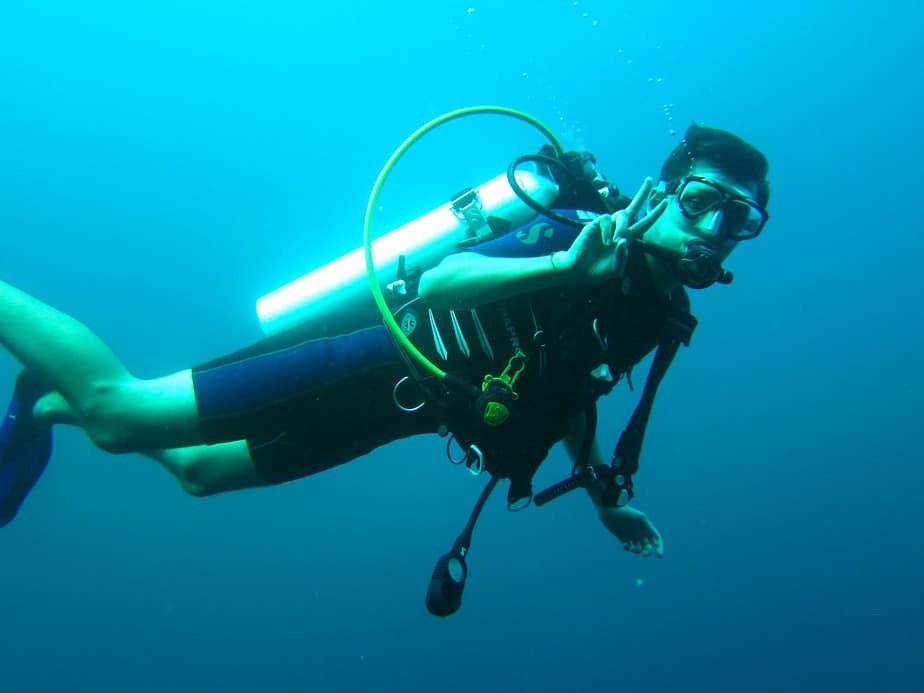A common mistake beginners make when starting out with scuba diving is having so much fun that they lose track of time, their dive buddy, or their location. Heck, even experienced divers can make this mistake if they are too focused on their dive. Sometimes, we need some reminders about what’s important so we don’t hurt ourselves or our fellow divers.
In this article, we’ll provide some tips to help divers stay safe during their dive. Some of these tips are no-brainers, some are essential safety tips, and others keep you from earning the ire of everybody on the dive boat, but these tips are all important for scuba diving.
Stay within your depth limits
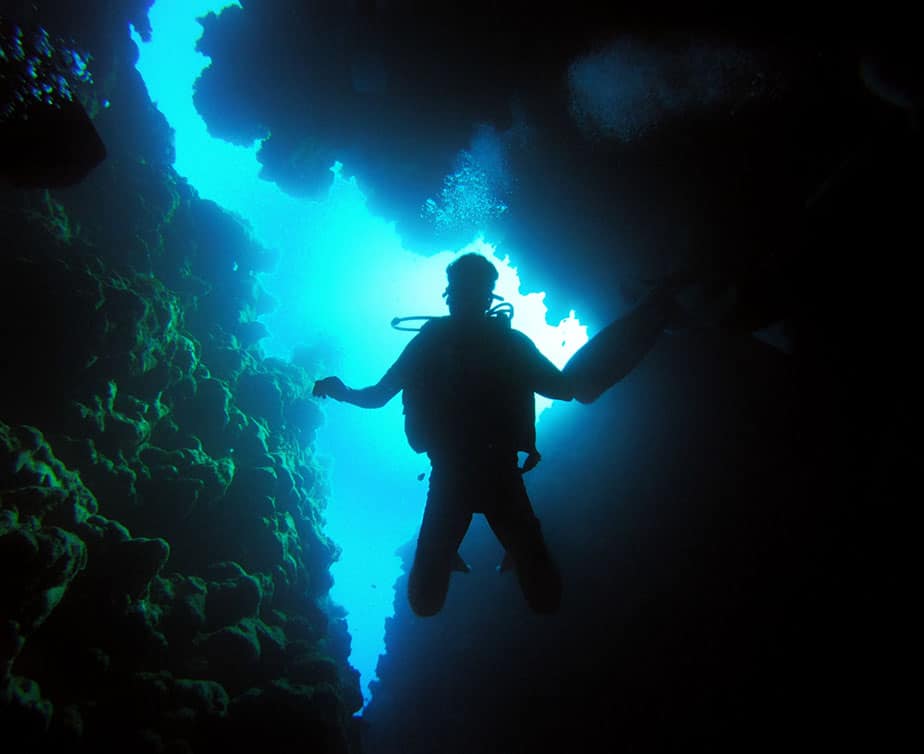
Depending on your certification, your depth limit might not be the same as another diver’s. You should always be diving within this limit and do not exceed it until you have acquired the requisite certification. The common depth limits for each certification are as follows:
- Open Water Diver – 18 m / 60 ft
- Advanced Open Water Diver – 30 m / 100 ft
- Deep Diver – 40 m – 130 ft
If you want to dive deeper than that, you’ll need to learn about technical diving. The PADI Tec 45 course will increase the depth limit to 45 m / 145 ft, and the PADI Tec Trimix 65 increases that even further to 65 m / 210 ft. You may never need to dive down to those depths if you’re a recreational diver, however it’s something you can aspire to one day if you feel like it.
Keep in mind there are also local regulations. For example, the dive center may have depth rules, or there may be site-specific limits that you should adhere to even if it’s shallower than your depth certification.
There is probably a good reason why some dive sites impose a depth limit. If you’re not sure what this limit is, don’t be afraid to ask what that limit is and why it’s there. Then make a mental note to dive no deeper than that limit instead of your certification’s limit.
It’s also important to consider the physiological effects that can occur to your body when you dive deeper as well as additional problems. Some factors to keep in mind are:
- Diving deeper causes your breathing gas to compress even more, causing it to run out faster.
- Your no-decompression time is much shorter the deeper you are. If you’re planning on doing a deep dive, it should probably be a decompression dive.
- The effects of nitrogen narcosis are greater at deeper depths (you can experience it as early as 10 m / 33 ft).
- Your diving insurance will not be valid if you dive further than your certified depth.
Diving deeper, even if you are certified to do so, should be done for a particular reason such as to check out a point of interest. Each time you dive, you should know exactly how deep you are planning to dive according to your dive plan. Diving deeper for no particular reason is riskier and will be a much shorter dive due to the faster air consumption rate.
Monitor your pressure gauge
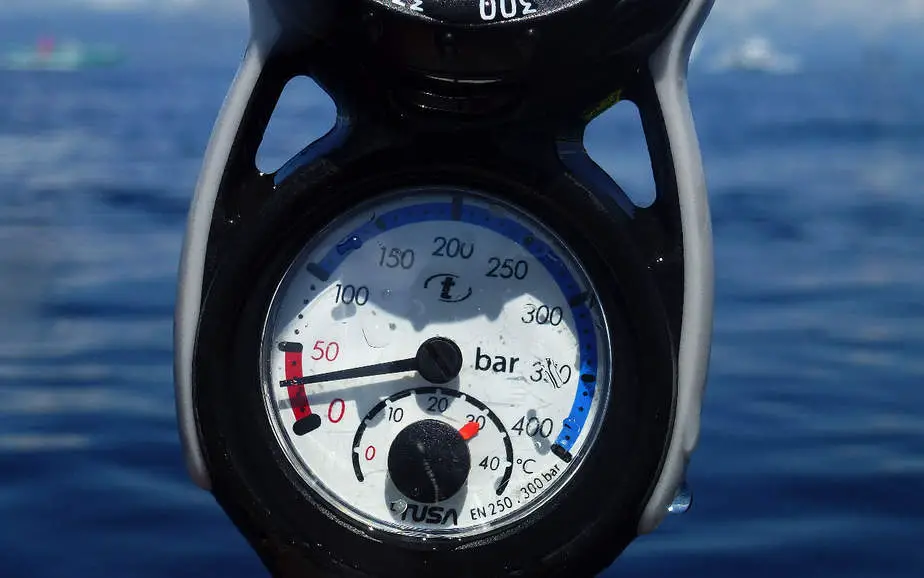
Most people take breathing air for granted until something happens that restricts their breathing. It could be a cold or allergies leading to a congested nose, asthma, or God forbid, COVID-19. Since this is a scuba diving article, what we’re alluding to is an out of air emergency while underwater.
Breathing is not something we need to think about on land because we’ve done it automatically our whole life. We don’t really think about what it’s like to have a limited amount of oxygen and to ration it properly. When you’re a scuba diver, it certainly is something to think about. Checking your submersible pressure gauge (SPG) every minute or two is vital to ensure you still have breathing gas left in the tank.
It’s so easy to get lost in the wonders of the underwater world, especially if you’re taking pictures or filming your adventures. However, it won’t be so fun anymore if your gauge is in the red and you haven’t even started ascending yet. Out of air emergencies are panic-inducing which can ironically cause you to breathe even faster. It’s also unfortunately a very common problem.
One of the most important rules in scuba diving and life in general is to stay calm. If you panic, you will be even worse off. There’s a reason why scuba divers have a buddy system. Running out of air doesn’t mean your life is about to end; just signal to your dive buddy that you need to share some air.
Also keep in mind that the deeper you dive, the faster the air is used, so you need to check frequently if you’re diving deep. You should make it a habit to check your SPG frequently. Don’t assume air is consumed at a constant rate. Sudden increases in physical exertion, for example due to a current, can force you to breathe rapidly and use up a lot of air. Sometimes regulators can free-flow and leak air constantly. All the more reason to monitor your pressure gauge as if it might run out at any time.
Monitor your no-decompression time
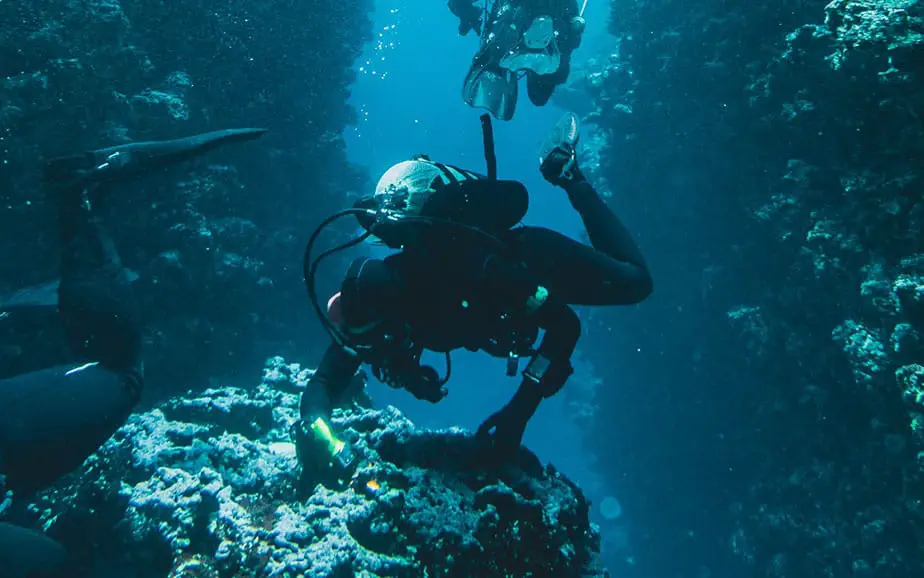
Recreational divers are not yet certified to do any decompression dives. Thus, they must pay close attention to their no-decompression limit (NDL) and end their dive before they exceed. The NDL is the maximum amount of time one can spend at a depth without needing to do any decompression stops during the ascent.
Before dive computers were invented, divers had to calculate their NDL using a dive table, and you would adhere to the dive plan using a depth gauge and a timer. Thankfully, dive computer will automatically calculate your NDL in real-time which saves you from doing the calculations.
The benefit of a dive computer is that it can account for sudden changes in depth or exertion due to unforeseen circumstances. Of course, this is all meaningless if you are not keeping a close watch on the dive computer. Most dive computers have programmable alarms that can alert you if you’re ascending too quickly or approaching the NDL.
Just like with your pressure gauge, your NDL will decrease faster the deeper you are. As you ascend, the remaining time may even begin to increase as the water pressure decreases.
If you accidentally exceed your NDL, you will need to do a mandatory decompression stop to avoid decompression sickness. You should follow the decompression instructions that your dive computer displays.
With a dive computer, managing your NDL is much more convenient, but only if you know how your dive computer works and that you’re tracking it closely.
Stay with your dive buddy
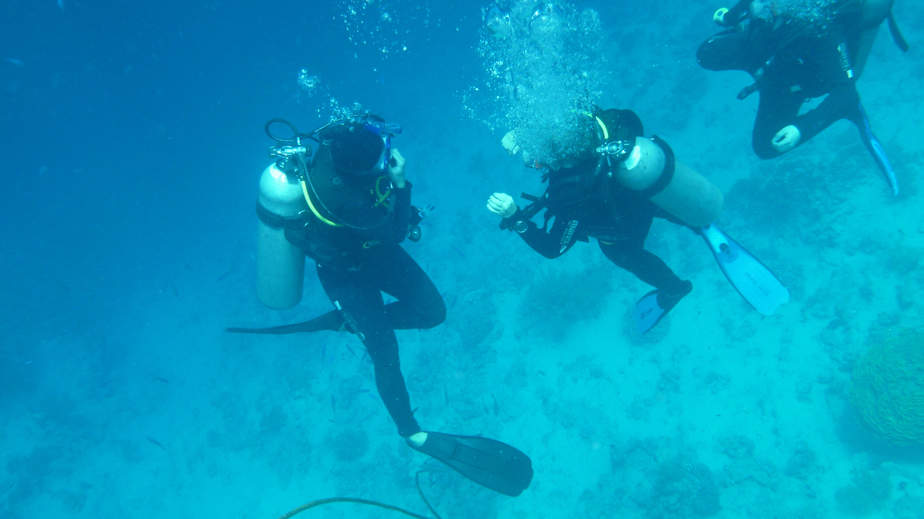
As we have already covered, staying with your dive buddy can make the difference between life or death in an emergency. Your buddy is there to assist you and vice versa, so you have to stay vigilant as well. You should be making visual contact with your dive buddy frequently so you always know their position.
Dive buddies should stay close enough together so that they can see and communicate with each other. You can alert each other about points of interest, potential dangers, or signal for help if you’re distressed. In murky waters, you may not be able to see your buddy if they are more than 6 feet away from you, so stick even closer than that in low visibility conditions.
You should check with your buddy periodically to see if they’re OK. Let each other know how much air is remaining so you’ll know when to end your dive. In general, men tend to run out of air faster than women because their larger size means they need to consume more air.
Losing your dive buddy can be stressful. Most dive procedures require you to end your dive if you lose contact with your dive buddy. It’s not an ideal scenario especially if it happens early into a dive, however unless you’re certified for solo diving and have backup equipment then you should err on the side of caution and regroup at the boat.
Be considerate of others in the group
Of course it’s a no-brainer to be considerate of others, but some divers are not even aware that they are potentially ruining the dive experience of their dive group. For instance, if you are straying too far from the group, they are forced to stop and look for you.
If you’re not careful with your kicks, you may kick up the silt on the bottom and decrease the visibility of the nearby area. When someone spots something exciting, don’t try to rush past divers like you’re the only one there. Everyone can get a chance to check out the sighting with some patience.
Pay close attention to your surroundings, and that includes other divers. Be mindful of intruding on others’ personal space, and let them enjoy the dive too. Don’t always be going off on your own, forcing your dive buddy to chase after you. By thinking about how your actions affect others, you can help ensure everybody has a good time.
Listen to the divemaster
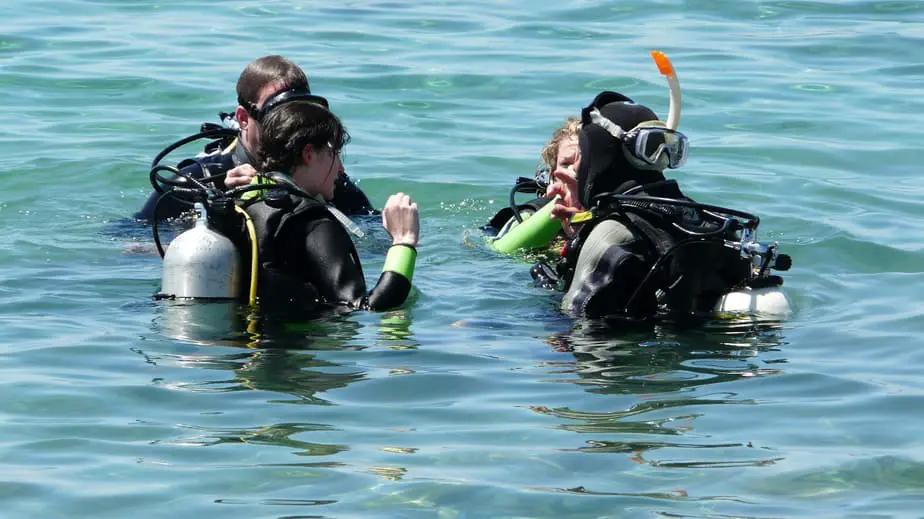
Pay attention to the dive briefings; the divemaster is very experienced and s/he is trying to help you get the most from your dive. Whether it’s sharing interesting information about the dive site or telling you crucial information about the tricky currents, you should humble yourself and defer to their experience.
While you don’t have to look closely at everything a divemaster is trying to show you, at least acknowledge them when they’re trying to get your attention, because it’s probably either interesting or important to know. For instance, they may be trying to warn you about a strong current; that’s information that you should definitely want to know.
Don’t risk taking photos or doing your own thing and ignore what could be a life-saving message. It’s also disrespectful to go ahead of the divemaster on a guided dive. You throw off the pace of the tour and might wander too far away from the group. Other divers will be forced to check up on you in case you encounter a potential hazard.
Pay attention to the dive briefing and stick to what they’ve asked you to do and the dive should go smoothly.
Manage your buoyancy
Mastering your buoyancy is crucial for keeping you safe and prevents damage to the aquatic environment. When you’re in a dive group, you need to be extra careful because you don’t want to crash into other divers.
Also keep in mind that too many ascents and descents in a dive, which is referred to as a saw tooth profile, can make you more likely to experience decompression sickness.
The optimal dive profile should consist of a controlled descent to the planned maximum depth (it can be fast or slow as long as it’s controlled), spending the planned amount of time at depth, then a slow, controlled ascent (can be multi-level) to your safety stop and the end of the dive.
Inexperienced divers may ascend or descend faster than they intended which is dangerous. They may also accidentally damage the environment, such as break a few corals, which is something we want to avoid. Not only will you hurt the corals, but you could damage your gear and hurt yourself. Stay away from them if you’re not confident of your buoyancy control.
Don’t let your camera rule the dive
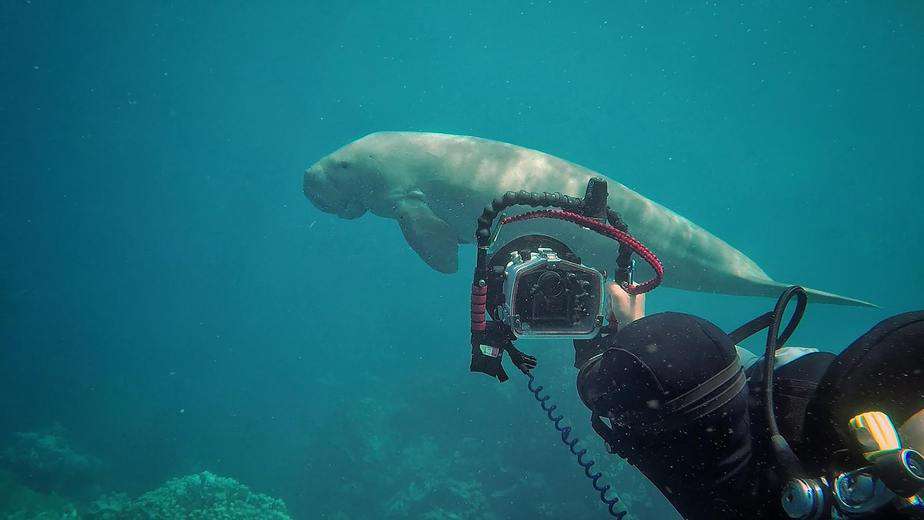
Are you an underwater photographer? Do you like taking breathtaking photos and preserving your diving journey so that family, friends, and strangers can see? For some people, they get so caught up in framing the perfect shot that they exceed their NDL or lose their dive buddy, among other things.
Taking underwater pictures is great, but don’t do it by neglecting everything else. Prioritize checking your gauges, dive computer, and dive buddy over taking pictures. You don’t want the pictures to end up being an account of your final moments after losing track of your buddy and running low on air.
Leave the wildlife alone
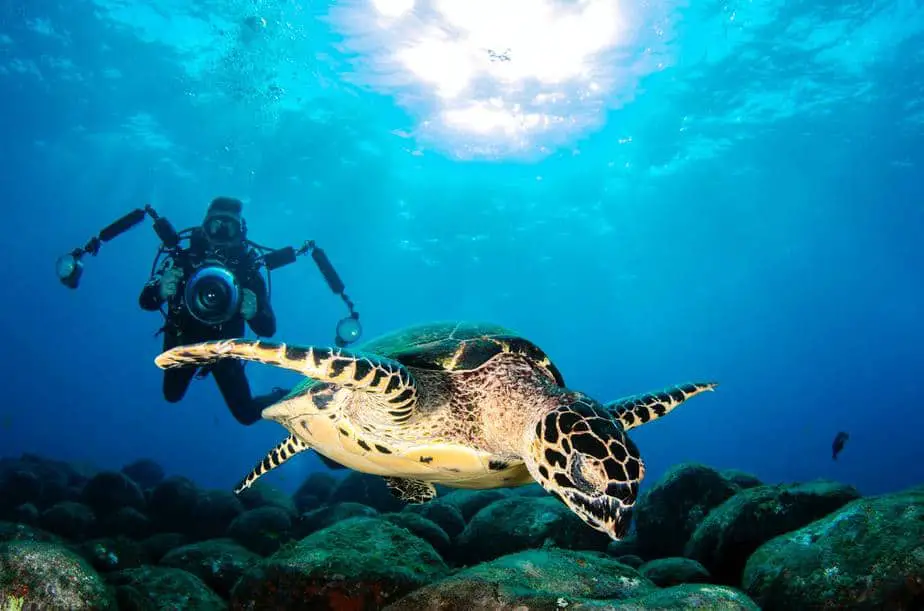
I know it’s tempting to touch or feed the marine wildlife, however it’s very dangerous to do so. Injuries can occur when the animals feel threatened and attack with a bite or a sting. Some animals are territorial or may feel trapped if you suddenly appear and reach your hand out to them. The end result is that they may perceive you as a threat and retaliate when you think you’re being friendly.
An important rule to follow is to look but don’t touch. By keeping a reasonable distance of a few meters, you are still close enough to see them without threatening them. Some marine life, such as corals, can get injured just by you touching them.
Feeding animals is not recommended either because it can upset the ecological balance underwater. It may also condition aquatic life to associate divers with food which could lead to problems in the future. Your goal is to look, take pictures, and leave everything undisturbed as if you were never there.
Follow local rules
Whenever you dive at a new dive site, find out what the rules are for that area. As we mentioned, there may be depth limit restrictions or distance restrictions for certain wildlife. Some areas have equipment restrictions. For instance, in the Maldives, reef hooks are fine to use but they are not permitted in the Egyptian Red Sea.
Pay particular attention to the rules in national park areas or any protected areas because you can get a hefty fine if you’re caught breaking the rules. Even in dive sites close by, they may have stricter rules compared to other dive sites that you’ll want to adhere to.
By learning about and diving within the rules of the location, you will not have any problems with the local authorities.
Parting words
In general, having some common sense and striving to be a more conscientious diver will also make you into a safer diver. You’ll also have more fun underwater when you’re confident in your skills and can maneuver yourself more easily.
With that said, even experienced divers need a reminder of the basics sometimes. Scuba diving is not particularly difficult but there are a lot of rules to follow. The tips discussed in this article will help divers know what to do during scuba diving to stay safe so that they’ll be a great diver that others will want to dive with again and again.
You might also be interested in these articles:

